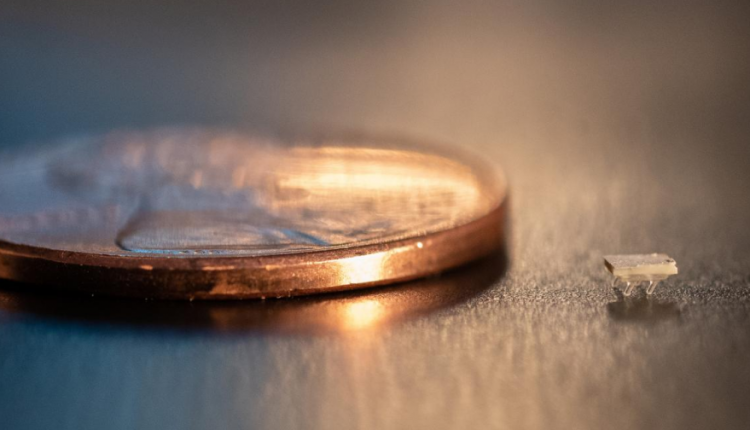
Tiny 3D-printed robots as small as the world’s smallest ants harness vibrations and respond to different vibration frequencies. Working together, the microbots may be able to work in swarms to sense environmental changes, move materials, or repair injuries inside the human body.
By harnessing vibration from piezoelectric actuators, ultrasound sources or even tiny speakers, the prototype robots respond to different vibration frequencies depending on their configurations, allowing researchers to control individual bots by adjusting the vibration. The microbots are approximately two millimeters long and can cover four times their own length in a second.
“We are working to make the technology robust, and we have a lot of potential applications in mind,” said Azadeh Ansari, an assistant professor in the School of Electrical and Computer Engineering at the Georgia Institute of Technology. “We are working at the intersection of mechanics, electronics, biology and physics. It’s a very rich area and there’s a lot of room for multidisciplinary concepts.”
The micro-bristle-bots consist of a piezoelectric actuator glued onto a polymer body that is 3D-printed using two-photon polymerization lithography (TPP). The actuator generates vibration and is powered externally because no batteries are small enough to fit onto the bot. The vibrations can also come from a piezoelectric shaker beneath the surface on which the robots move, from an ultrasound/sonar source, or even from a tiny acoustic speaker.
The vibrations move the springy legs up and down, propelling the micro-bot forward. Each robot can be designed to respond to different vibration frequencies depending on leg size, diameter, design and overall geometry. The amplitude of the vibrations controls the speed at which the micro-bots move.
“As the micro-bristle-bots move up and down, the vertical motion is translated into a directional movement by optimizing the design of the legs, which look like bristles,” explained Ansari. “The legs of the micro-robot are designed with specific angles that allow them to bend and move in one direction in resonant response to the vibration.”
The micro-bristle-bots are made in a 3D printer using the TPP process, a technique that polymerizes a monomer resin material. Once the portion of the resin block struck by the ultraviolet light has been chemically developed, the remainder can be washed away, leaving the desired robotic structure.
“It’s writing rather than traditional lithography,” Ansari explained. “You are left with the structure that you write with a laser on the resin material. The process now takes quite a while, so we are looking at ways to scale it up to make hundreds or thousands of micro-bots at a time.” Some of the robots have four legs, while others have six. Hundreds of the tiny structures were created to determine the ideal configuration.
The piezoelectric actuators, which use the material lead zirconate titanate (PZT), vibrate when electric voltage is applied to them. In reverse, they can also be used to generate a voltage when they are vibrated, a capability the micro-bristle-bots could use to power up onboard sensors when they are actuated by external vibrations.
Steering capability will be added to the robots by joining two slightly different micro-bristle-bots together. Because each of the joined micro-bots would respond to different vibration frequencies, the combination could be steered by varying the frequencies and amplitudes. Other researchers have worked on micro-robots that use magnetic fields to produce movement, but magnetic forces cannot easily be used to address individual robots within a swarm.
The micro-bristle-bots created by Ansari and her team are believed to be the smallest robots powered by vibration and are approximately two millimeters in length, 1.8 millimeters wide and 0.8 millimeters thick. They weigh about five milligrams.
Ansari and her team have built a “playground” in which multiple micro-bots can move around as researchers learn more about what they can do. They are also interested in developing micro-bots that can jump and swim. The team is studying the collective behavior of ants to apply what can be learned from them to the microbots.
Source: Georgia Institute of Technology
